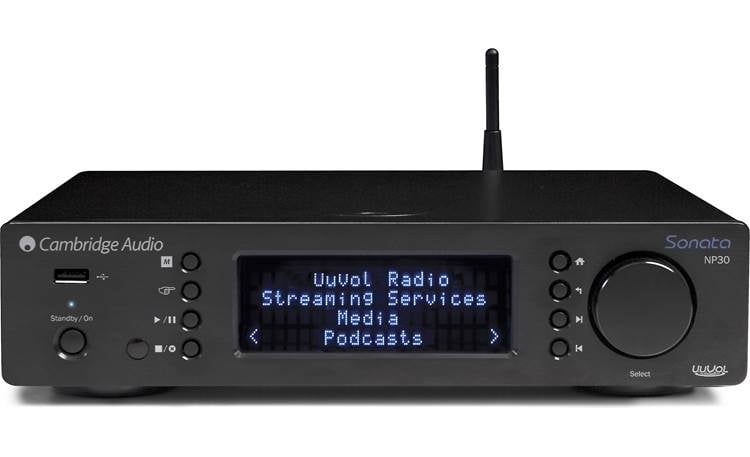According to the original 1985 Nait, a newborn Naim delivered roughly 7W per channel. Small boxes from Salisbury, like the (then) new UnitiQute, pushed out 45W per side by 2010, and included DAB, FM, uPnP streaming, and USB sources, as well as a built-in DAC and analogue inputs. How quickly things have changed!
It was the UnitiQute’s flawless integration of so many sources into one compact package, as well as the outstanding sound that they all produced considering it was a one-box system, that made it so exceptional. The preamplifier had two analogue inputs, five 24-bit/192kHz digital inputs (via a Wolfson DAC), FM and DAB tuners, and the ability to play music from an iPod or MP3 player via its front panel-mounted USB socket (with digital iPod playout, Apple authenticated); the USB socket could also play (up to) 24/96 music files from a USB memory stick. A network Ethernet socket and built-in Wi-Fi were also included as standard features.
The power amplifier was said to be capable of producing 45W RMS per channel into 4 Ohms and 30W into 8 Ohms. There was a linear power supply with a 200VA toroidal transformer with three different windings, as well as separate power supplies for the digital, analogue, and power amplifier, according to Naim. For best performance, there was also a ground selector switch. All of this was housed in a lovely non-resonant, non-magnetic casing with a fantastic green OLED fine pitch dot-matrix display. The dimensions were 87x207x314mm and the weight was 5.6kg.
While the UnitiQute surprised and pleased in a variety of ways (24/96 from a USB stick was cool in 2010), it couldn’t play Apple Lossless files out loud, while it could play them digitally from an iPod. WAV, Windows Media-formatted material, AAC, and FLAC files from any UPnP device were also supported by the tiny Naim. For those who wished to wallow in the muck, MP3 was also available!
It was difficult to triangulate the sound of the UnitiQute. It was superior than any other product of its type in the grand scheme of things, with a dry, clear sound and a strong, taut, and punchy bass. The small Naim was better at letting songs flow than many similarly priced amplifiers, resulting in a compelling and energetic rendering of any music you fed it. It wasn’t the warmest of tones, but it wasn’t hard or unpleasant to listen to. It had a very mature sound that was detailed and sharp, with a finely finessed treble. The result was a superb little music box, a stunning do-it-all little system with excellent build quality, excellent ergonomics, and powerful sound.



